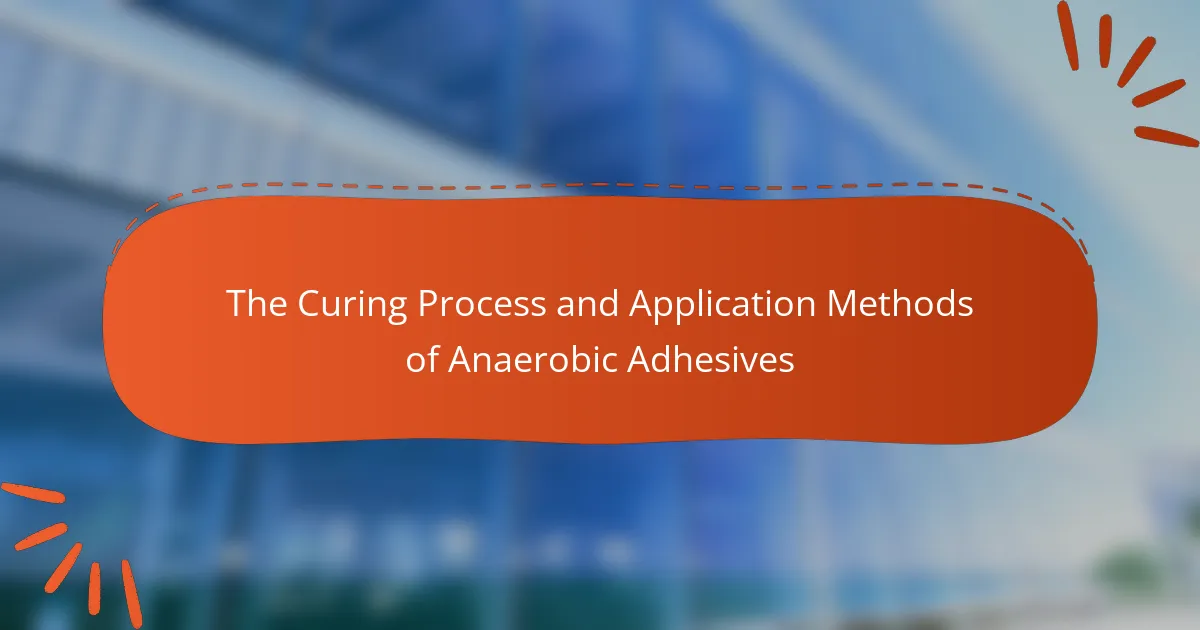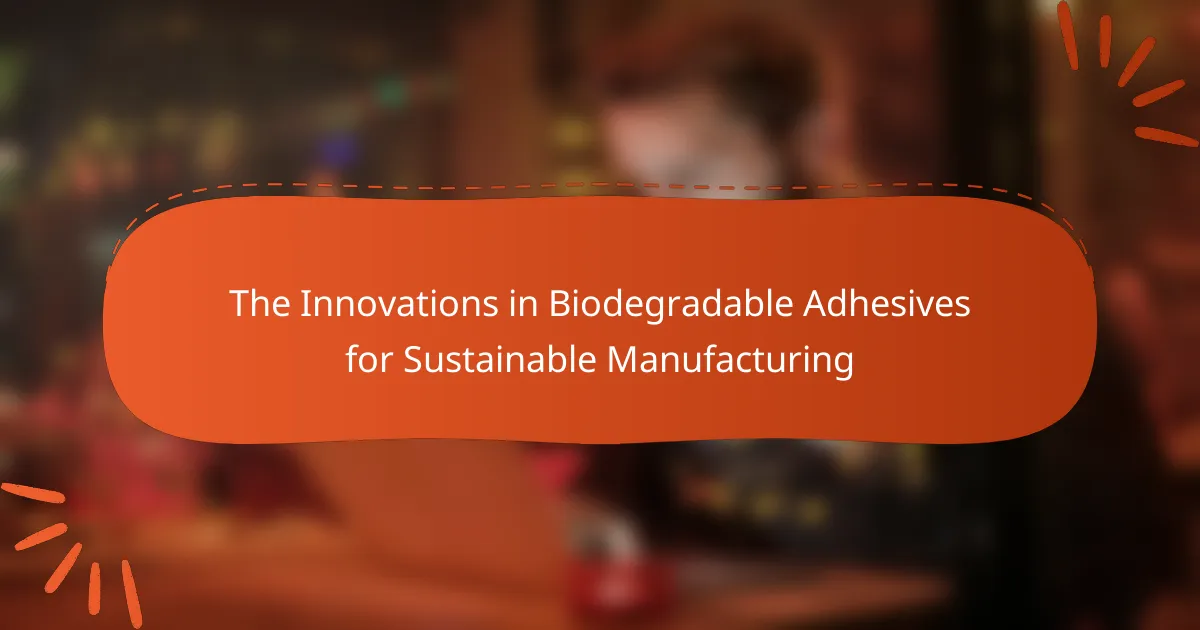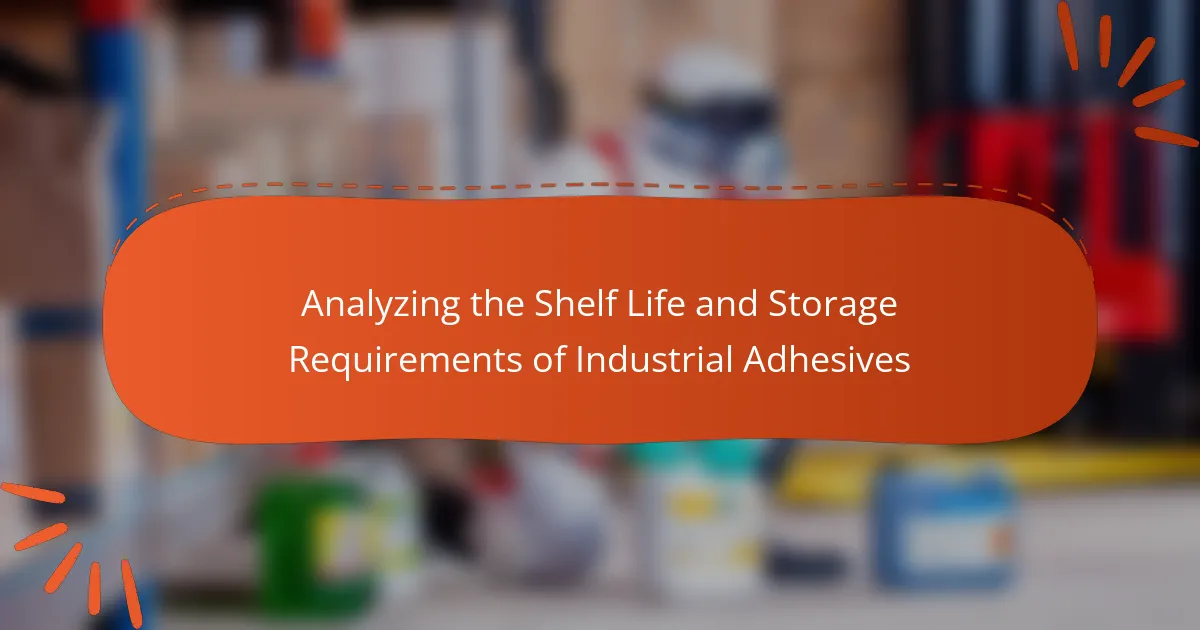Anaerobic adhesives are specialized adhesives that cure in the absence of air, primarily composed of acrylic compounds that polymerize when exposed to metal ions. This unique curing mechanism makes them particularly effective for bonding metals and other materials in tight-fitting assemblies, commonly used in threadlocking, retaining, and gasketing applications. The curing process occurs at room temperature and can vary in duration, depending on the formulation. Various application methods, including brush application, syringe dispensing, and automated dispensing systems, enhance the precision and efficiency of anaerobic adhesive use in automotive, aerospace, and industrial settings.
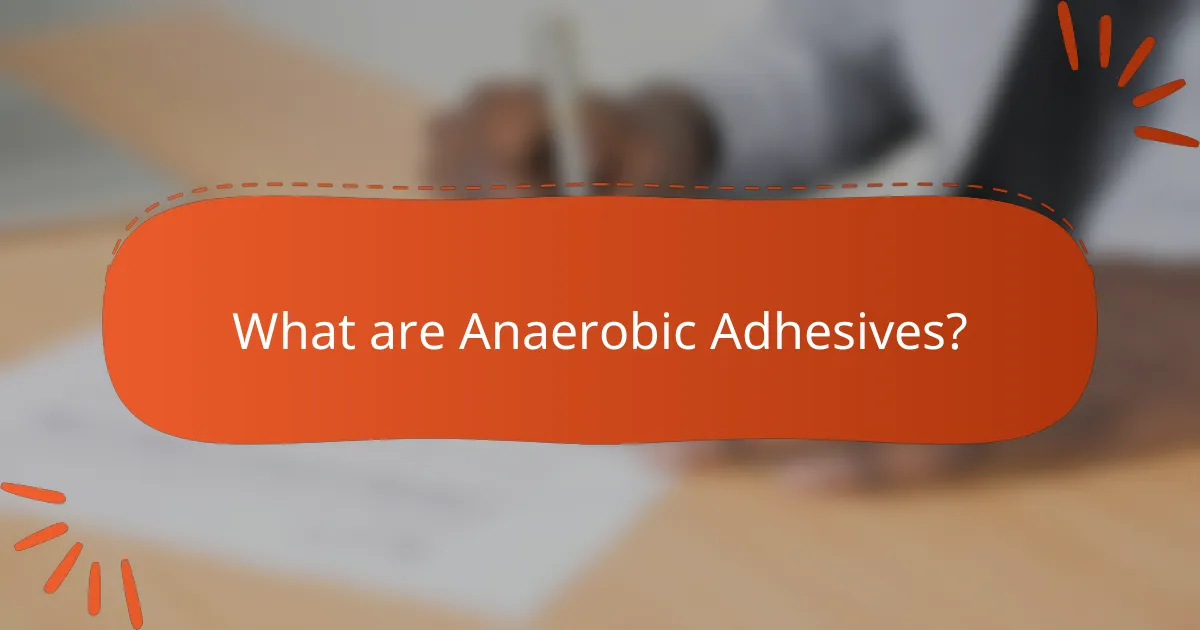
What are Anaerobic Adhesives?
Anaerobic adhesives are a type of adhesive that cure in the absence of air. They typically consist of acrylic compounds that polymerize when deprived of oxygen. This curing mechanism makes them ideal for bonding metals and other materials in tight-fitting assemblies. Anaerobic adhesives are often used in applications like threadlocking, retaining, and gasketing. They provide strong bonds that resist vibration and thermal cycling. Their effectiveness is enhanced when applied to clean, dry surfaces. Anaerobic adhesives are commonly found in automotive, aerospace, and industrial applications.
How do Anaerobic Adhesives differ from other adhesives?
Anaerobic adhesives differ from other adhesives primarily in their curing mechanism. They cure in the absence of air, unlike many adhesives that require moisture or heat. This unique property allows anaerobic adhesives to bond metals and other non-porous materials effectively. The curing process begins once the adhesive is confined between two surfaces, preventing exposure to oxygen. Anaerobic adhesives typically achieve maximum strength within a few hours. This is different from other adhesives that may take longer to cure. Additionally, anaerobic adhesives are resistant to chemicals and temperature variations, making them suitable for industrial applications. Their ability to fill gaps enhances their bonding capability compared to traditional adhesives.
What are the key characteristics of Anaerobic Adhesives?
Anaerobic adhesives are characterized by their ability to cure in the absence of air. They bond surfaces tightly when confined between close-fitting parts. These adhesives typically exhibit high strength and durability once cured. They are resistant to moisture, chemicals, and temperature variations. Anaerobic adhesives often have a low viscosity, allowing for easy application. They are commonly used in metal bonding applications. The curing process involves a chemical reaction initiated by the presence of metal ions. This unique property makes them suitable for applications like thread locking and retaining assemblies.
Why are Anaerobic Adhesives used in specific applications?
Anaerobic adhesives are used in specific applications due to their unique curing properties. These adhesives cure in the absence of air, making them ideal for bonding metal surfaces. They provide strong adhesion in environments where traditional adhesives may fail. Anaerobic adhesives are commonly used in automotive and industrial applications. They effectively seal threads and prevent leakage in pipes and fittings. Their resistance to chemicals and temperature variations enhances their suitability for harsh conditions. The ability to bond dissimilar materials also adds to their versatility. Overall, their specific applications stem from their reliable performance and unique curing mechanism.
What is the significance of the curing process in Anaerobic Adhesives?
The curing process in anaerobic adhesives is crucial for achieving strong bonds. This process occurs in the absence of oxygen, which allows the adhesive to polymerize effectively. During curing, the adhesive transforms from a liquid state to a solid state, enhancing its mechanical properties. The significance of this process includes increased shear strength and resistance to environmental factors. Proper curing ensures that the adhesive can withstand stress and strain during application. Additionally, the curing time can affect the overall performance of the adhesive. Faster curing times can lead to quicker assembly processes in manufacturing. Overall, the curing process is essential for the reliability and durability of anaerobic adhesive applications.
How does the curing process work for Anaerobic Adhesives?
Anaerobic adhesives cure in the absence of air and in the presence of metal ions. The curing process begins when the adhesive is applied to a surface. Once the adhesive is confined between two metal surfaces, oxygen is excluded. This initiates a chemical reaction that leads to polymerization. The reaction is catalyzed by the metal ions present in the substrates. Typically, this process can take anywhere from a few minutes to several hours to complete. The final result is a strong bond that is resistant to solvents and temperature changes. Anaerobic adhesives are commonly used in various industrial applications, including automotive and manufacturing sectors.
What factors influence the curing time of Anaerobic Adhesives?
The curing time of anaerobic adhesives is influenced by several key factors. These include the type of adhesive formulation, which determines its chemical properties. The presence of moisture also plays a critical role, as anaerobic adhesives require a certain level of humidity to cure effectively. Additionally, the surface material can affect curing time; different substrates can either promote or hinder the curing process. Temperature is another significant factor; higher temperatures generally accelerate curing. The thickness of the adhesive layer impacts curing time as well; thicker layers may take longer to cure. Lastly, the presence of contaminants on the bonding surfaces can inhibit proper adhesion and extend curing time.
What are the common applications of Anaerobic Adhesives?
Anaerobic adhesives are commonly used in applications such as bonding metal parts, sealing threaded joints, and securing fasteners. They are effective in environments where air is limited, such as in automotive and aerospace industries. These adhesives cure in the absence of oxygen, providing strong and durable bonds. They are also utilized in manufacturing processes for machinery assembly and maintenance. Studies show that anaerobic adhesives can withstand high temperatures and resist chemicals, making them suitable for industrial applications. Their versatility allows for use in plumbing, electrical, and construction sectors.
Which industries utilize Anaerobic Adhesives?
Anaerobic adhesives are utilized in various industries. These include automotive, aerospace, manufacturing, and electronics. In the automotive industry, anaerobic adhesives are used for locking and sealing threaded fasteners. The aerospace sector employs these adhesives for bonding components in aircraft assembly. Manufacturing relies on anaerobic adhesives for assembly processes that require strong bonds. Electronics use anaerobic adhesives for securing components on circuit boards. Each of these industries benefits from the unique properties of anaerobic adhesives, such as their ability to cure in the absence of air.
What types of joints are best suited for Anaerobic Adhesives?
Anaerobic adhesives are best suited for threaded joints and close-fitting metal parts. These adhesives cure in the absence of air, making them ideal for applications where air exposure is limited. Threaded joints benefit from anaerobic adhesives as they provide strong bonding under vibration and stress conditions. Close-fitting metal parts also benefit from the gap-filling properties of anaerobic adhesives. The bonding strength of anaerobic adhesives in these applications can exceed the tensile strength of metals. This ensures durability and reliability in mechanical assemblies.
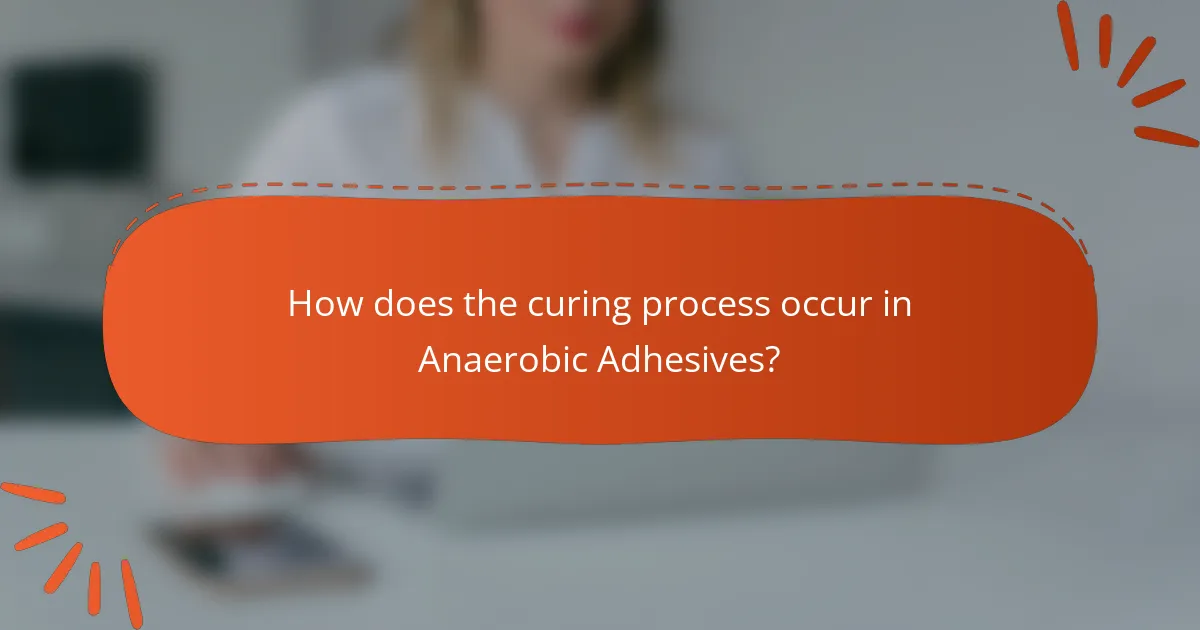
How does the curing process occur in Anaerobic Adhesives?
Anaerobic adhesives cure in the absence of air. They rely on the presence of metal ions to initiate the curing process. When these adhesives are applied between two metal surfaces, the lack of oxygen triggers a chemical reaction. This reaction converts the liquid adhesive into a solid bond. The curing process typically occurs at room temperature. It can take anywhere from a few minutes to several hours, depending on the specific formulation. Anaerobic adhesives are often used for locking, sealing, and bonding applications. Their effectiveness is enhanced in tight-fitting joints where air is excluded.
What are the stages of the curing process?
The stages of the curing process for anaerobic adhesives include initiation, propagation, and termination. During initiation, the adhesive begins to react in the absence of oxygen. This stage involves the activation of the adhesive’s components, typically through the presence of metal ions. Propagation follows, where the reaction continues and the adhesive forms strong bonds as it cures. This stage is characterized by the gradual increase in viscosity and strength. Finally, termination occurs when the reaction ceases, leaving a fully cured adhesive. This process can take anywhere from minutes to hours, depending on the specific formulation and environmental conditions.
What role does moisture play in the curing of Anaerobic Adhesives?
Moisture activates the curing process of anaerobic adhesives. These adhesives require the absence of air and the presence of moisture to initiate polymerization. Moisture acts as a catalyst, facilitating the chemical reaction that leads to curing. In environments with low humidity, curing may be delayed or incomplete. Conversely, adequate moisture levels ensure optimal performance and bond strength. Research indicates that anaerobic adhesives can achieve full strength in the presence of moisture, enhancing their effectiveness in various applications.
How can temperature affect the curing process?
Temperature significantly influences the curing process of anaerobic adhesives. Higher temperatures generally accelerate the curing reaction, leading to faster set times. For instance, a temperature increase of 10°C can double the curing speed of many adhesives. Conversely, lower temperatures can slow down the curing process, potentially resulting in incomplete bonding. This effect is crucial because it affects the final strength and durability of the adhesive bond. Maintaining optimal temperature conditions during application ensures effective curing and performance of the adhesive.
What are the benefits of proper curing in Anaerobic Adhesives?
Proper curing in anaerobic adhesives ensures optimal bond strength and durability. This process allows the adhesive to fully polymerize, leading to a robust, long-lasting connection. Adequate curing reduces the risk of premature failure in applications. It also enhances resistance to environmental factors such as moisture and temperature variations. Proper curing can improve chemical resistance, making the adhesive suitable for various industrial applications. According to studies, fully cured anaerobic adhesives can achieve tensile strengths exceeding 3,000 psi. This strength is crucial for maintaining structural integrity in demanding environments. Overall, proper curing maximizes the performance and reliability of anaerobic adhesives.
How does proper curing enhance bond strength?
Proper curing enhances bond strength by allowing anaerobic adhesives to fully polymerize. This process occurs in the absence of air, which is essential for the adhesive’s chemical reaction. During curing, the adhesive molecules cross-link, creating a stronger and more durable bond. Adequate curing time and conditions lead to optimal mechanical properties. Research shows that incomplete curing can result in reduced bond strength, impacting performance. For instance, studies indicate that bond strength can increase by over 50% with proper curing compared to inadequate curing. Thus, ensuring proper curing is crucial for achieving the desired bond strength in anaerobic adhesives.
What are the consequences of improper curing?
Improper curing of anaerobic adhesives can lead to several negative consequences. Insufficient curing may result in weak bond strength. This weakness can cause the adhesive to fail under stress. Additionally, incomplete curing can lead to poor chemical resistance. The adhesive may degrade when exposed to solvents or harsh environments. Furthermore, improper curing can cause the adhesive to remain tacky. This tackiness can attract dirt and contaminants, compromising the bond. Lastly, improper curing can result in longer cure times, delaying project completion. These factors highlight the importance of following proper curing procedures for optimal adhesive performance.
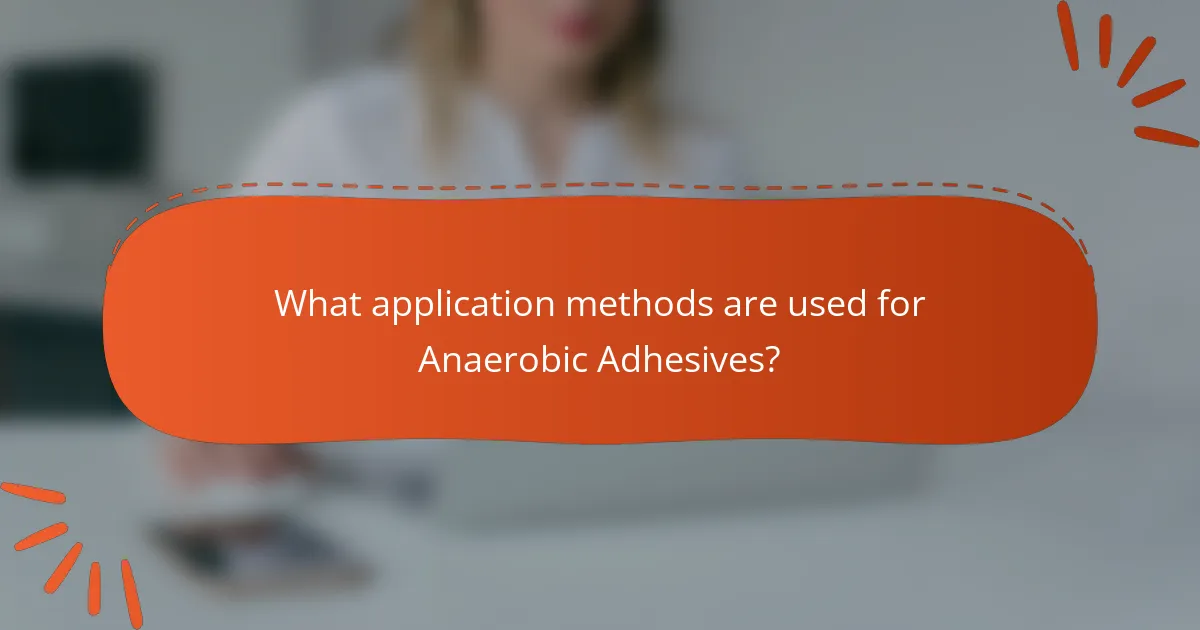
What application methods are used for Anaerobic Adhesives?
Anaerobic adhesives are typically applied using methods such as brush application, syringe dispensing, and automated dispensing systems. Brush application allows for controlled placement on surfaces. Syringe dispensing provides precision for small or intricate areas. Automated dispensing systems ensure consistent application in high-volume production. Each method is suited for specific tasks, enhancing efficiency and effectiveness.
What are the different methods for applying Anaerobic Adhesives?
The different methods for applying anaerobic adhesives include bead application, brush application, and spray application. Bead application involves dispensing a continuous line of adhesive directly from the container onto the surfaces to be bonded. Brush application allows for controlled placement of adhesive onto surfaces using a brush, ensuring an even coat. Spray application involves using a spray nozzle to atomize the adhesive for a fine mist over larger areas. Each method is suitable for different applications based on the size and type of the surfaces being bonded. These methods ensure effective coverage and adhesion by allowing the adhesive to fill gaps and create a strong bond upon curing.
How do you choose the right application method for specific projects?
Choosing the right application method for specific projects involves assessing project requirements and adhesive properties. First, evaluate the surfaces to be bonded. Different surfaces may require different methods, such as brush, roller, or spray application. Next, consider the viscosity of the anaerobic adhesive. Thicker adhesives may need a dispensing gun for precise application.
Also, account for the project scale. Larger projects may benefit from spray methods for efficiency, while smaller tasks might be suited for manual application. Environmental factors are important too. Temperature and humidity can affect curing times and adhesive performance, influencing the choice of method.
Finally, review the manufacturer’s guidelines. They provide specific recommendations based on adhesive formulation. Following these guidelines ensures optimal adhesion and project success.
What tools are commonly used for applying Anaerobic Adhesives?
Common tools for applying anaerobic adhesives include applicator bottles, syringes, and brushes. Applicator bottles allow for precision in dispensing small amounts. Syringes provide controlled application, especially in tight spaces. Brushes can spread adhesive evenly over surfaces. These tools ensure effective adhesion by allowing accurate placement and minimizing waste. Each tool serves a specific purpose in the application process.
What best practices should be followed when using Anaerobic Adhesives?
Use anaerobic adhesives in a clean and dry environment. Contaminants like dust and oil can inhibit adhesion. Apply the adhesive to one surface only. This ensures proper bonding without excess material. Ensure proper fit between bonded parts. Gaps can lead to weak joints. Allow adequate curing time as specified by the manufacturer. Full strength may take 24 hours or more. Store adhesives in a cool, dark place to maintain their effectiveness. Check expiration dates regularly to ensure reliability. Use appropriate safety gear, such as gloves and goggles, to prevent skin and eye contact. Follow these best practices to achieve optimal results with anaerobic adhesives.
How can users ensure optimal adhesion and curing?
Users can ensure optimal adhesion and curing by preparing surfaces properly. Clean the surfaces to remove contaminants like dust, oil, and moisture. Use a suitable solvent for cleaning, such as isopropyl alcohol. Ensure that the surfaces are dry before applying the adhesive. Apply the anaerobic adhesive evenly to avoid gaps. Follow the manufacturer’s instructions regarding the amount of adhesive needed. Maintain the recommended temperature range during curing, as temperatures outside this range can hinder adhesion. Allow sufficient time for the adhesive to cure fully, which can vary based on the specific product used. Research shows that proper surface preparation significantly improves adhesion quality and curing efficiency.
What common mistakes should be avoided during application?
Common mistakes to avoid during the application of anaerobic adhesives include improper surface preparation. Surfaces should be clean, dry, and free from contaminants. Neglecting to do this can lead to weak bonds. Another mistake is applying too much adhesive. Excessive amounts can lead to overflow and improper curing. Additionally, failing to follow the manufacturer’s instructions can result in ineffective bonding. It’s crucial to adhere to recommended application techniques and curing times. Lastly, not allowing sufficient curing time before applying stress can compromise the bond strength. Research shows that proper adherence to application guidelines significantly enhances adhesive performance.
What troubleshooting tips are available for Anaerobic Adhesives?
Ensure proper surface preparation before applying anaerobic adhesives. Clean surfaces to remove contaminants like oil or dust. Use appropriate solvents for cleaning, ensuring complete dryness before application. Check the adhesive’s expiration date to ensure effectiveness. Store adhesives at recommended temperatures to maintain performance. Apply the adhesive in the correct amount; too little may not bond effectively, while too much can lead to excess curing time. Allow adequate curing time as specified by the manufacturer. If issues persist, consider environmental factors such as humidity and temperature, which can affect curing.
Anaerobic adhesives are specialized adhesives that cure in the absence of air, primarily used for bonding metals and other non-porous materials. This article explores the unique curing process of anaerobic adhesives, detailing how it differs from other adhesives, the key characteristics that enhance their performance, and the factors influencing curing time. Additionally, it covers the various application methods, best practices for use, and common mistakes to avoid, providing a comprehensive understanding of their significance in industrial applications. The discussion highlights the importance of proper curing for achieving optimal bond strength and durability in various settings.
